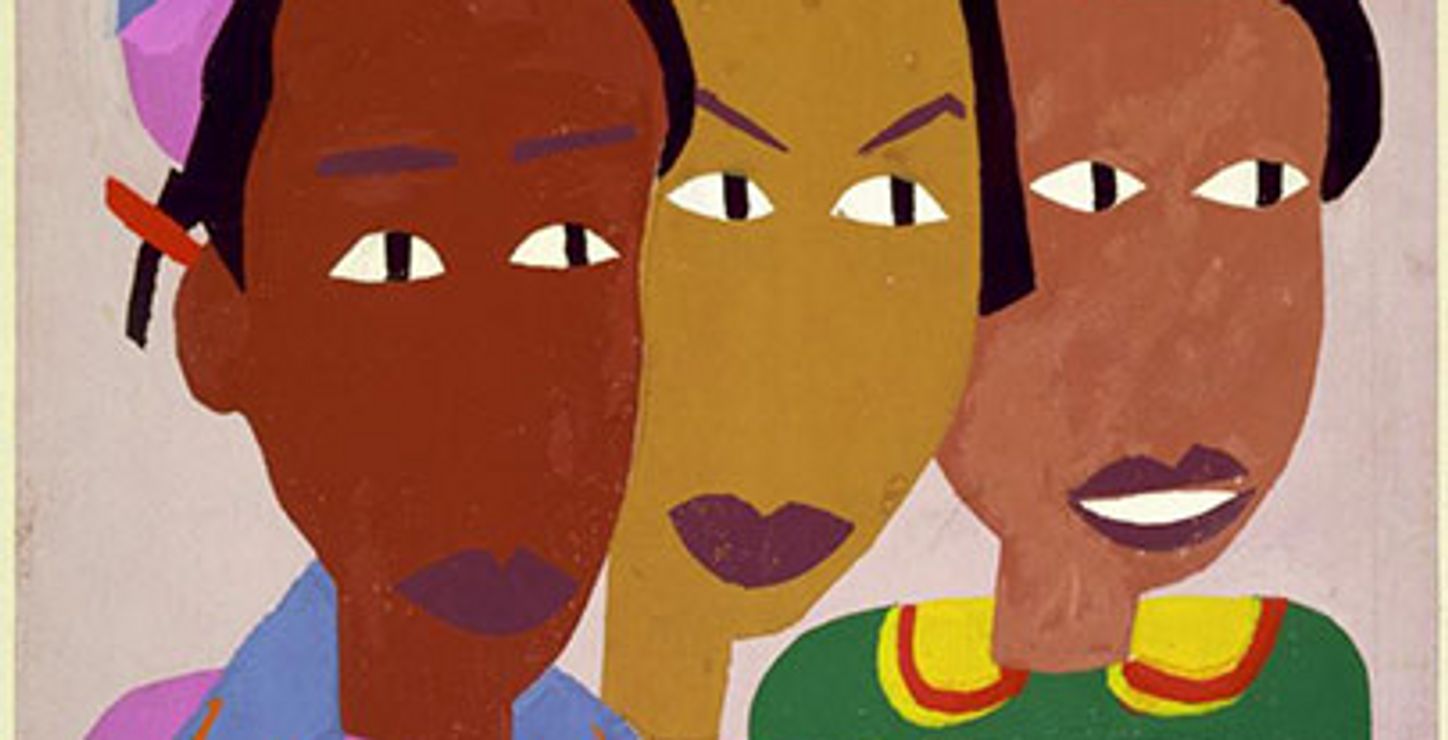Berman and Stieglitz Galleries, ground floor
Main Building

William H. Johnson (1901–1970) Three Friends, c. 1944–1945 Serigraph Smithsonian American Art Museum Gift of the Harmon Foundation
William H. Johnson's World on Paper examines, for the first time, the achievements of African American modernist William H. Johnson (1901–1970)—often considered one of the most inventive artists of his generation—as a graphic artist.
A special style to express a personal vision... var f_divname="mp3player"; var f_width=133; var f_height=60; var f_file="Johnson Overview,johnson Unique Style"; var f_filetype="exhibitionMinutes"; var f_title="Overview,Unique Style"; Listen to or download curator John Ittmann's 2-part Podcast. Available in
Eighty works of art on paper,including thirty-two watercolors and tempera paintings, about two-dozen block-prints (many of which are hand-colored), and fourteen screenprints, provide an overview of Johnson's career both in Europe in the 1930s and in New York in the 1940s. Among the varied subjects of his work are early landscapes of Denmark, Norway, and North Africa; portraits of his neighbors in Denmark; scenes of daily life in the urban North and the rural South; and scenes of black enlisted men and female volunteers of World War II.
This exhibition reveals Johnson's stylistic development from the dramatic, expressionistic mode of the works he made in Europe in the 1930s to the distinctive form of figurative abstraction (based on folk art as well as African colors and patterns) he developed after returning to the United States on the eve of World War II.
This exhibition is organized and circulated by The Smithsonian American Art Museum. The exhibition's tour is supported in part by The C.F. Foundation, Atlanta, and The William R. Kenan, Jr., Endowment Fund.
Smithsonian American Art Museum • July 1, 2006–January 7, 2007
Amon Carter Museum, Fort Worth, TX • February 3–April 8, 2007
Philadelphia Museum of Art • May 19–August 12, 2007
Montgomery Museum of Art, Montgomery, AL • September 15–November 18, 2007
Berman and Stieglitz Galleries, ground floor
Main Building
Born in 1901 to a poor family in Florence, South Carolina, William H. Johnson moved to New York at age 17, just in time for the first flowering of the Harlem Renaissance, a thriving African American cultural movement. Working a variety of jobs, he saved enough money to pay for an art education at the prestigious National Academy of Design. Johnson worked with painter Charles Hawthorne, who raised funds to send Johnson abroad to study.
He spent the late 1920s in France, absorbing the lessons of modernism. During this period he married Danish artist Holcha Krake, and the couple spent most of the 1930s in Scandinavia, where Johnson's interest in folk art had a profound impact on his work. While in Europe, Johnson also came in contact with the art of Edvard Munch, whose rough-gouged experimental woodcuts inspired a generation of artists in the 1920s to try new printmaking techniques. The unevenly inked areas in some of the artist's woodblock prints suggest that Johnson did not use a printing press but instead applied pressure to the back of the paper with the bowl of a spoon or the heel of his hand to transfer the wet ink from the block to the paper.
Returning with Holcha to the United States in 1938, Johnson continued to make block prints. At the same time, he was also attracted to the screenprint technique, which was becoming popular with American artists. In fact, it was with his screenprints that Johnson made his most lasting mark as a printmaker. The bright-hued, opaque inks and hand-cut stencils used for making screenprints proved to be ideal for translating the sharp edges and flat expanses of his new tempera painting style, which appears to have been inspired in equal parts by the colorful cartoons of his childhood, the folk art of Scandinavia and North Africa, and the African American folk traditions of the United States.
Although Johnson gained recognition as an artist both in this country and abroad, financial security remained elusive. Following his wife's death in 1944, Johnson's physical and mental health deteriorated and he spent the final twenty-three years of his life in obscurity, confined to a state hospital in Long Island, New York.

The exhibition tour is supported in part by the C.F. Foundation, Atlanta.
John Ittmann • Curator of Prints, Drawings, and Photographs